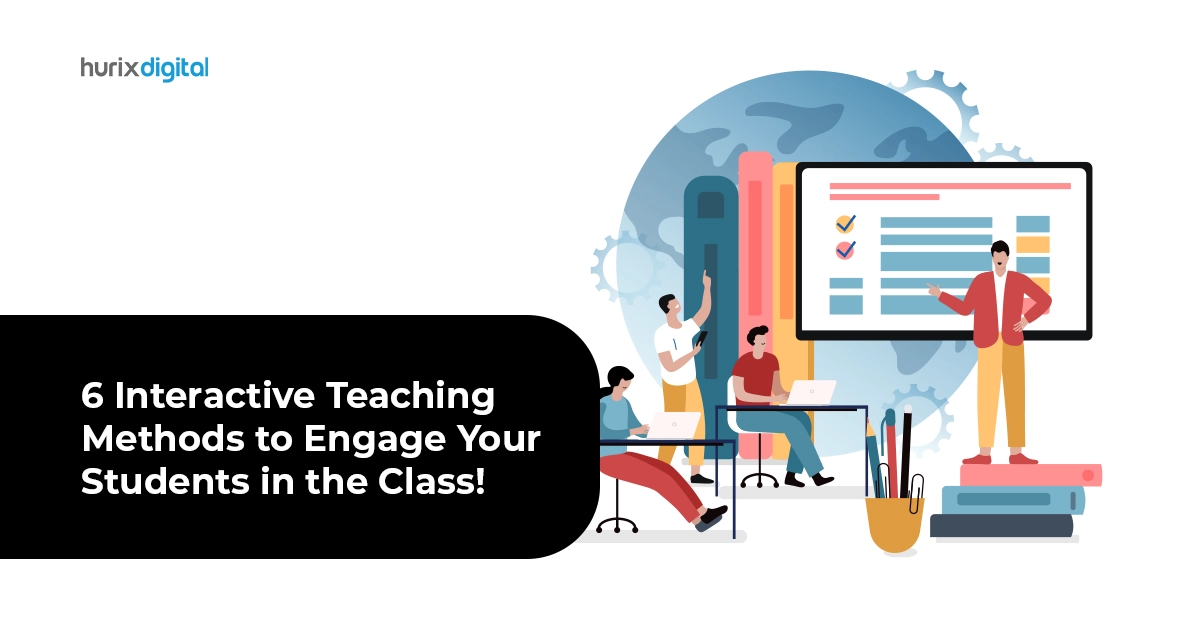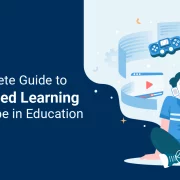
Six Interactive Teaching Methods to Engage Your Students in the Class
Summary
This blog post highlights interactive teaching methods that enhance student engagement and participation in the classroom.
As traditional pedagogies evolve, educators are increasingly turning towards interactive teaching methods to captivate the attention of their students and foster a genuine enthusiasm for learning.
Given that 91% of school-age children are acquainted with video games, it comes as no surprise that teachers are moving towards digital game-based learning to enhance their lessons and boost student engagement.
In this post, we will take you through the top six methods that can revolutionize your classroom by making learning an interactive and exciting adventure. Let’s start!
Table of Contents:
Six Interactive Teaching Methods to Engage Your Students
Below are the 6 interactive teaching methods to engage your students in a classroom:
1. Flipped Classroom Model
Use the flipped classroom approach to turn the conventional classroom concept upside down. Assign homework that consists of taped lectures or readings to allow for more participatory discussions and activities during class time. With this approach, learning is reinforced by active involvement in class, and students are free to interact with the subject at their own pace.
The flexibility that the flipped classroom model affords students in creating their learning schedules is one of its most noteworthy features. Because lectures and readings are available to students outside of class, they can study the content at a time that works best for them.
With this technique, students can review difficult concepts until they grasp them, and it also supports a variety of learning styles.
2. Gamification in Education
Infuse an element of fun into your teaching methods with gamification in education. Design educational games that align with your curriculum to make learning enjoyable and interactive. Gamification not only motivates students but also instills a sense of achievement, making the learning process more rewarding.
Gamification in education transforms the traditional classroom into an engaging and dynamic space where learning feels like an adventure rather than a chore. By incorporating game elements into educational activities, educators tap into the natural inclination of students to explore, compete, and achieve.
One of the key benefits of gamification is its ability to enhance motivation. Educational games introduce an element of competition, challenges, and rewards that captivate students’ interest.
Also Read: What’s the Difference Between Game-based Learning and Gamification?
3. Personalized Learning Pathways
Establish individualized learning pathways that acknowledge each student’s uniqueness. Make sure that each student feels challenged and supported by customizing classes to suit their learning styles and speeds. Utilize technology to offer flexible learning resources and evaluations that address each learner’s areas of strength and growth.
In the field of education, a one-size-fits-all strategy frequently fails to meet the various demands and learning preferences of pupils. Personalized learning paths, on the other hand, recognize and value the individuality of every learner and provide a revolutionary solution.
At the core of personalized learning is the customization of educational content to match the preferences, strengths, and paces of individual students.
By employing a variety of instructional methods, educators can ensure that lessons resonate with diverse learning styles, whether they are visual, auditory, kinesthetic, or a combination of these modalities. This flexibility not only enhances understanding but also fosters a more inclusive and accessible learning environment.
4. Education Technology, and Integration
Teaching and learning are changing as a result of the introduction of education technology into the classroom, which is more than just a contemporary fad.
Educators and students have a plethora of chances to enhance the educational experience as we embrace the digital age and integrate resources like educational applications, online collaboration platforms, and interactive whiteboards.
For dynamic and visually stimulating lessons, interactive whiteboards work as the central focus. Teachers can facilitate student involvement, comment on content in real-time, and illustrate difficult concepts using these interactive displays. Interactive whiteboards meet the needs of a variety of learning styles by including multimedia components, which makes learning more engaging and memorable.
Educational apps provide a versatile and accessible means of delivering content. Whether through gamified learning experiences, virtual simulations, or interactive quizzes, educational apps cater to the varied preferences and paces of students.
Integrating these apps into lessons not only reinforces key concepts but also cultivates a familiarity with interactive education technology that is increasingly vital in today’s digital world.
5. Peer Teaching and Collaboration
By putting students in active positions as both contributors and beneficiaries of the learning process, peer teaching and interactive collaboration constitute a paradigm shift from traditional classroom dynamics.
Teachers can access numerous advantages beyond just imparting knowledge by implementing these innovative teaching strategies.
Assigning students the role of teachers or group leaders nurtures leadership skills from an early stage. By guiding their peers through discussions, presentations, or collaborative projects, students learn to communicate effectively, delegate responsibilities, and navigate group dynamics.
These leadership experiences are invaluable, preparing students for future academic and professional endeavors where collaboration and effective communication are essential.
6. Real-World Simulations
Real-world simulations provide students with the opportunity to apply theoretical knowledge in simulated, yet authentic, scenarios.
Whether utilizing virtual reality (VR) experiences or engaging in hands-on activities, students can witness how their academic learnings translate into practical solutions. This direct application enhances their understanding of complex concepts and fosters a deeper appreciation for the relevance of their studies.
Confronted with challenges mirroring those encountered in professional settings, students learn to analyze situations, make decisions, and adapt their strategies. This hands-on problem-solving experience is invaluable, as it equips students with the skills needed to tackle real-world challenges with confidence.
Also Read: How to Use AI and Gamification to Assess Student Learning?
Conclusion
From the adaptive realms of personalized learning pathways to the immersive experiences of real-world simulations, the methods discussed above contribute uniquely to the holistic development of students.
As we shift to an era that demands not just academic proficiency but also critical thinking, problem-solving, and adaptability, these interactive learning strategies stand as pillars and equip students with the skills needed to thrive in the complexities of the future.
If you are ready to elevate your classroom experience and captivate your students with interactive teaching, Hurix Digital can help. They not only provide advanced educational technology solutions but also partner with educators to create interactive content that aligns with your curriculum and learning objectives.
Contact us to know more!



